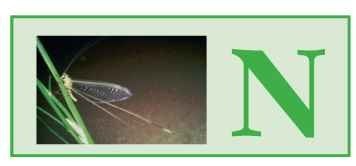Neosomy in an arthropod is a remarkable enlargement or formation of new external structure, or both, resulting from the secretion of new cuticle unrelated to a molt, during an active instar or in the adult. It is distinct from the more modest addition of cuticle that contributes to intermolt growth of many immature insects (notably larvae of Endopterygota) and that can be detected in some adult insects. Neosomy usually is associated with symbiosis and often with tachygenesis. Physogastry has been used overlappingly, but this term etymologically indicates abdominal swelling, and it usually has been defined as distension and not in relation to cuticular growth.
EXAMPLES
Neosomy is widely present in the Acari, including some parasitic larval mites and all stages (larva, nymph, adult female) of hard ticks (Ixodidae). Female ixodid ticks generally increase in volume about 100 times or more, after first doubling cuticular thickness during the prolonged time they are attached to the host. In the chigger genus Vatacarus taken from the lungs of sea snakes, larval volume increases 1500 times or more and neosomules (the new external structures) form as papillae that aid wormlike movement. All feeding is larval, and the adult casts larval and nymphal exuviae together when it emerges. In the Crustacea, some ectoparasitic copepods are neosomatic.
Neosomy is seen in adults, primarily females, of some holometabo-lous insects. Tunga penetrans (Fig. 1A) in mammals, including humans, grows until only the head is visible anteriorly on a globular body, but this is more moderate than most Tunga neosomes (see below). Flies in the genus Ascodipteron in bats develop much as Tunga does.
Some termite- and ant-associated beetles and flies are neo-somatic. Social parasites among staphylinid beetles mimic termites in order to be accepted by the colony. The termite-mimicking cuticle that grows from the abdomen of an initially normal-looking adult beetle has paired “legs” and “antennae” (Fig. 1B). Neosomatic cuticle usually grows in soft areas between sclerites, but it may also involve sclerotized parts in these beetles. Many queen termites, sometimes >12.5 cm in length, and some queen ants are neosomatic.
![Female neosome, lateral view (scale bar, 1 mm). (A) T. penetrans, with part of head visible on left [Reproduced with permission from Audy et al. (1972).]. (B) Coatonachthodes ovambolan-dicus. Female neosome, lateral view (scale bar, 1 mm). (A) T. penetrans, with part of head visible on left [Reproduced with permission from Audy et al. (1972).]. (B) Coatonachthodes ovambolan-dicus.](http://lh6.ggpht.com/_X6JnoL0U4BY/S8HctCS4QoI/AAAAAAAAYW0/T-RmbkSjzdU/tmp917_thumb_thumb.jpg?imgmax=800)
FIGURE 1 Female neosome, lateral view (scale bar, 1 mm). (A) T. penetrans, with part of head visible on left [Reproduced with permission from Audy et al. (1972).]. (B) Coatonachthodes ovambolan-dicus.
Tunga monositus, embedded in the skin of rodent ear pinnae, grows > 1000 times until it no longer has any surface resemblance to a flea (Fig. 2A-G); addition of cuticle is centered in the second abdominal segment.
FUNCTIONAL SIGNIFICANCE
Combination of neosomy with symbiosis results from the abundance of food provided by a host or host colony. Neosomy in a termite or ant queen suggests that, although the association is intraspecific and hence not symbiotic, the queen’s relation to the colony as a whole parallels symbiosis functionally. A female ixodid tick or a queen termite, for example, has unusual access to food and produces many eggs compared with related groups.
Tachygenesis has a comparable effect in sheltering the species from risks. T. penetrans has two rather than the usual three instars of fleas. The more advanced T. monositus does not feed as a larva, and all stages except the female in the host are sheltered in a rodent burrow, nonfeeding, and quiescent (except the larva spinning its cocoon and the male mating). The mimicry in termite-associated beetles presumably could not be achieved other than by neosomy.

FIGURE 2 Development of female T. monositus (photographs by author.). (A) Before feeding, 0.9 mm long. (B) Neosome removed after 3-4 days in host, dorsolateral, 1.5 mm long. (C) Neosome, 10 days, lateral, head left, 2 mm long. (D) Neosome, 20 days, oviparous, anterior, head hidden by abdominal lobes, up to 5.5 mm. (E) Same, posterior. (F) Neosome, 21 days, section of feeding area, papilla of host tissue 0.2mm wide, flanked by abdominal lobes. (G) Neosome largely under skin oflab mouse pinna, 21 days, 6mm.

